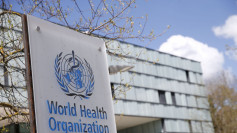As the summer progresses, recent data from the Centers for Disease Control and Prevention (CDC) has shown an uptick in COVID-19 emergency room visits and deaths across the United States. This trend, observed in the latest surveillance data, has reignited concerns about the ongoing impact of the virus, especially as it continues to mutate and spread.
The CDC's latest figures reveal a 23% increase in emergency department visits related to COVID-19. During the week of June 22, the percentage of ER visits diagnosed as COVID-19 rose to 0.9%, with notable increases in states such as Hawaii, Arizona, New Mexico, Florida, and Washington. Additionally, there has been a 14% jump in COVID-19-related deaths over the past week. While this percentage increase may sound alarming, it is important to note that the absolute number of deaths remains significantly lower than the peaks seen earlier in the pandemic.
"We will continue to enforce our immigration laws and remove individuals without a legal basis to remain in the United States," said Homeland Security Secretary Alejandro Mayorkas in a statement. This stance reflects the ongoing efforts to manage COVID-19 alongside other national concerns.
The increase in COVID-19 cases and deaths comes as the virus shows a more predictable seasonal pattern, with larger surges in winter and smaller increases in summer. Experts have indicated that while the current rise in cases is concerning, the risk of severe illness or death is much lower than in previous waves, thanks in large part to widespread vaccination and natural immunity from prior infections.
Despite these reassurances, the CDC recommends that everyone aged six months and older receive the updated COVID-19 vaccine once it becomes available later this year. Health officials have particularly emphasized the importance of vaccination for older adults, who remain at heightened risk for severe outcomes from COVID-19.
In addition to tracking hospitalizations and deaths, the CDC has increasingly relied on wastewater surveillance to monitor the spread of the virus. Recent data indicates that levels of SARS-CoV-2 in wastewater have reached "high" levels across several western U.S. states, including Hawaii, which has reported some of the highest levels since the pandemic began. However, nationally, the virus levels in wastewater are still considered "low."
Dr. William Schaffner, a professor at Vanderbilt University School of Medicine, commented on the seasonal pattern of COVID-19, stating, "Summer is back, and we are about to have the summer bump of COVID cases. We have a bump in the summer, and then it goes down in the fall, and goes up more substantially in the winter."
The CDC has stopped short of declaring a nationwide summer surge, noting that COVID-19 activity remains low compared to previous years. "During April and May 2024, COVID-19 activity was lower than at any time since the start of the pandemic. Recent increases need to be considered from that baseline," the CDC stated.
Hawaii, in particular, has seen significant increases in COVID-19 emergency room visits and wastewater levels, surpassing peaks from last summer and winter. However, recent forecasts suggest that the situation in Hawaii may be stabilizing, with emergency room visits showing signs of plateauing.
Meanwhile, a new variant known as LB.1 has been gaining traction in the eastern United States. This variant, a descendant of the JN.1 variant from the past winter, accounted for 30.9% of cases in New York and New Jersey as of early June. In contrast, less than 10% of cases in western states were attributed to LB.1 during the same period. While COVID-19 trends in emergency room data from the New York and New Jersey area have risen, they remain far below the peaks seen in previous waves.






